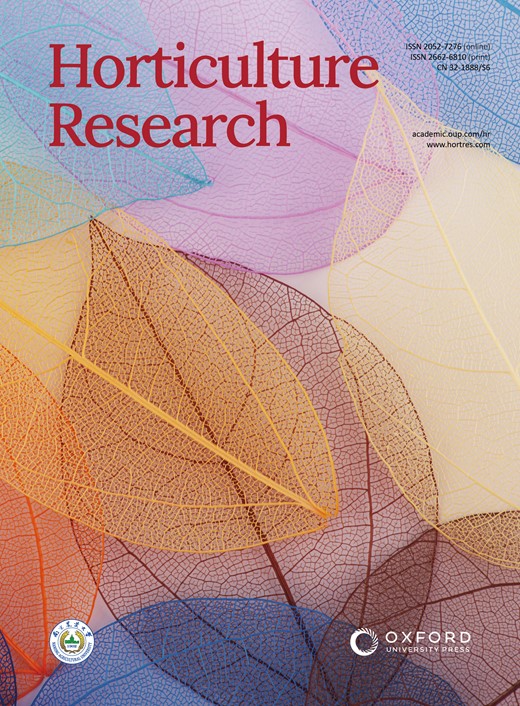整合 QTL 图谱和转录组学,破译甘蓝型油菜中甾醇代谢的遗传结构
IF 8.5
1区 农林科学
Q1 Agricultural and Biological Sciences
引用次数: 0
摘要
甾醇是油菜籽中常见的次级代谢产物,在植物中发挥着重要的生理作用,同时也有益于人类健康。因此,揭示油菜固醇合成的遗传基础非常重要。本研究在甘蓝型油菜的双单倍体(DH)群体中检测了 21 种单体固醇以及总固醇含量(TS),并鉴定了与 TS 和不同单体固醇相关的 24 个 QTL 和 157 个 mQTL。时间序列转录组分析表明,涉及固醇和脂质生物合成途径的差异表达基因(DEGs)得到了富集。此外,还利用共表达分析建立了固醇相关 DEGs 和转录因子(TFs)之间的调控网络。通过整合转录组分析和 QTL 图谱,确定了一些候选基因,并选择了关键候选基因 BnSQS1.C03 进行进一步的功能分析。BnSQS1.C03在体外具有角鲨烯合成酶活性,在拟南芥中过表达时,TS增加了3.8%。本研究结果为了解甾醇调控途径提供了新的视角,也为今后培育甾醇含量高的油菜品种提供了宝贵的遗传基础。本文章由计算机程序翻译,如有差异,请以英文原文为准。
Integrating QTL Mapping and Transcriptomics to Decipher the Genetic Architecture of Sterol Metabolism in Brassica napus L
Sterols are secondary metabolites commonly found in rapeseed that play crucial physiological roles in plants and also benefit human health. Consequently, unraveling the genetic basis of sterol synthesis in rapeseed is highly important. In this study, 21 individual sterols, as well as total sterol content (TS) were detected in a double haploid (DH) population of Brassica napus, and a total of 24 QTL and 157 mQTL were identified that were associated with TS and different individual sterols. Time-series transcriptomic analysis showed that the differentially expressed genes (DEGs) involved in sterol and lipid biosynthesis pathways were enriched. Additionally, a regulatory network between sterol-related DEGs and transcription factors (TFs) was established using coexpression analysis. Some candidate genes were identified with the integration of transcriptomic analysis and QTL mapping, and the key candidate gene BnSQS1.C03 was selected for further functional analysis. BnSQS1.C03 demonstrated squalene synthase activity in vitro and increased the TS by 3.8% when overexpressed in Arabidopsis. The present results provide new insights into sterol regulatory pathways and a valuable genetic basis for breeding rapeseed varieties with high sterol content in the future.
求助全文
通过发布文献求助,成功后即可免费获取论文全文。
去求助
来源期刊

Horticulture Research
Biochemistry, Genetics and Molecular Biology-Biochemistry
CiteScore
11.20
自引率
6.90%
发文量
367
审稿时长
20 weeks
期刊介绍:
Horticulture Research, an open access journal affiliated with Nanjing Agricultural University, has achieved the prestigious ranking of number one in the Horticulture category of the Journal Citation Reports ™ from Clarivate, 2022. As a leading publication in the field, the journal is dedicated to disseminating original research articles, comprehensive reviews, insightful perspectives, thought-provoking comments, and valuable correspondence articles and letters to the editor. Its scope encompasses all vital aspects of horticultural plants and disciplines, such as biotechnology, breeding, cellular and molecular biology, evolution, genetics, inter-species interactions, physiology, and the origination and domestication of crops.
 求助内容:
求助内容: 应助结果提醒方式:
应助结果提醒方式:


